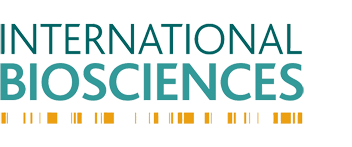5 Crucial DNA paternity testing misconceptions to learn

The use of DNA paternity testing has increased over the years due to the ease of figuring out the conclusive result of paternal rights as well as the increased usage of these tests on television shows. As such, the concept of DNA testing is not lost on the masses nowadays. However, there are still plenty of misconceptions being thrown around about the legitimacy and process of the DNA testing that should be addressed.
That is why these 5 crucial DNA paternity testing misconceptions will finally be discussed. Hopefully, this would answer the misguided rumors or hearsay about the whole concept of DNA paternity testing.
There Are Better Alternatives Than Maternity Or Paternity Testing
This is a huge misconception that most people would question. DNA comparison is the most accurate method currently being used by medical professionals to provide a suitable conclusion to the paternity or maternity testing. The method itself has an accuracy rating of 99.99% success rate that the person in question is the biological parent and a 100% success rate of proving if they are not.
Blood type screening is another known method for claiming the results of a paternity or maternity test. However, the results are not as accurate as one initially thought. Certain medical treatments and substances could alter the blood samples and result in an inconclusive result.
Legal Paternity Testing And Home DNA Paternity Testing Are The Same
One major difference that most people overlook with the home DNA paternity tests is that those tests have no legal bearing whatsoever. A home DNA paternity test is commonly referred to as the “peace of mind” test which, like the name suggests, is to get a sense of comfort with the results.
A home DNA testing kit can be ordered from here. The testing kits would then be sent to your home with detailed instructions to guide you in every step of the way. Alongside the guide would be labels for the sample as well as a consent form that needs to be signed to comply with the Human Tissue Act. The process of the home DNA testing kit would have you take a sample swab inside your mouth to collect cheek cells that would dictate whether you are the biological parent or not. You would then need to mail the sample back as soon as possible and wait for 3 to 5 days for your results.
A legal DNA paternity test, on the other hand, is a court-ordered DNA test wherein a legal representative and an accredited 3rd party would accompany the person in question through every step in order to ensure that there is absolutely no cheating involved in the entire process. The test process is no different from standard laboratory testing for DNA comparison. This just adds the legal identification that can and will be used for legal bearing.
Any Laboratory Is Good Enough
There are different levels of laboratory accreditation when it comes to different types of DNA testing. The best way to ensure that you receive the best testing possible would be to go to one with a certified ISO 17025 accreditation by the AABB alongside an “Accredited Parentage Testing Facility”.
Do your research before committing to a DNA testing facility. In addition, keep in mind that your testing facility of choice should undergo the 21 genetic marker test, otherwise known as the Ioci, to fully profile the samples. Above all, a proper lab should not give a positive or negative result. Instead, the result should be released as a statistical numerical value.
You Need The Mother’s Sample To Be Accurate
No, a mother’s DNA sample is generally not essential in compiling a conclusive report on the DNA samples. However, a genetic mutation or biologically related paternal testing between twins could prove difficult to come to a final result. In such a case like that, you would then be asked to provide a sample of the mother’s DNA to help make the testing results be more accurate than without one.
A mother’s DNA sample can be given at any time during the testing procedure to provide a more accurate final result despite the conditions of the testing. It is always best to be as accurate as possible when it comes to testing DNA.
Oral Swabs Are The Only Tests Available
Absolutely not. There is a multitude of ways for people to be tested when it comes to acquiring a genetic sample of the alleged father. Anything that can contain DNA in the human body is ample evidence needed to provide a conclusive result. As such, common alternative sources would include blood, semen, hair, and saliva. You can even use items that have come in contact with said alternative sources such as combs, tissues, or cigarette butts.
Be aware that you still need to comply with the Human Tissue Act wherein your partner should be noted that he is compliant to you using his sample using the items in question.
In addition, an oral swab test is the most commonly used testing method due to the ease of preparation.
Related articles

